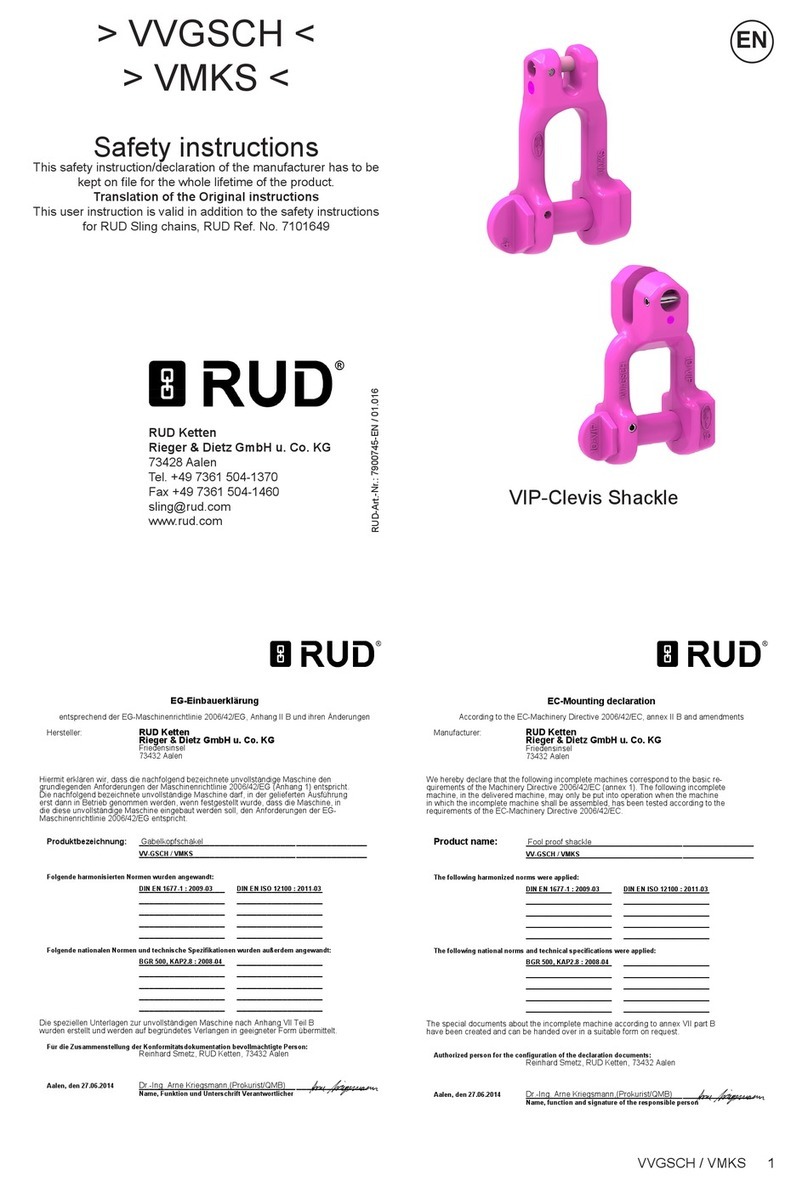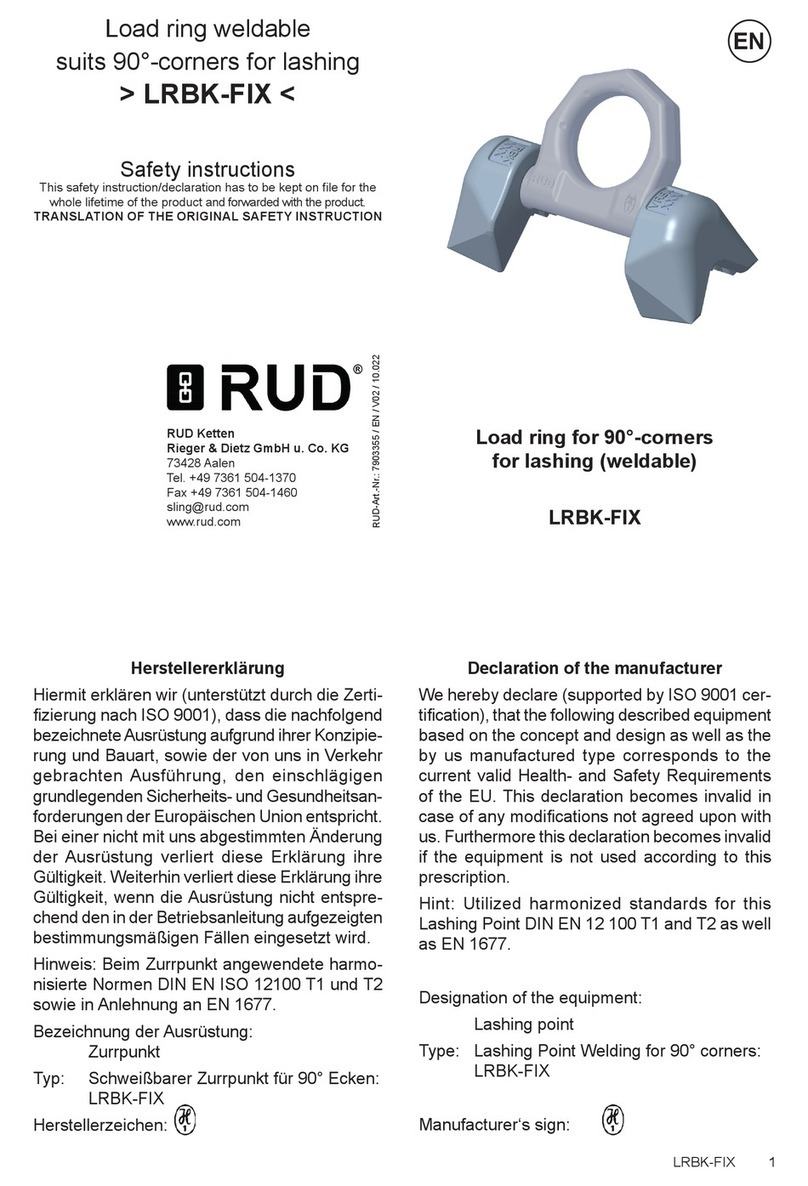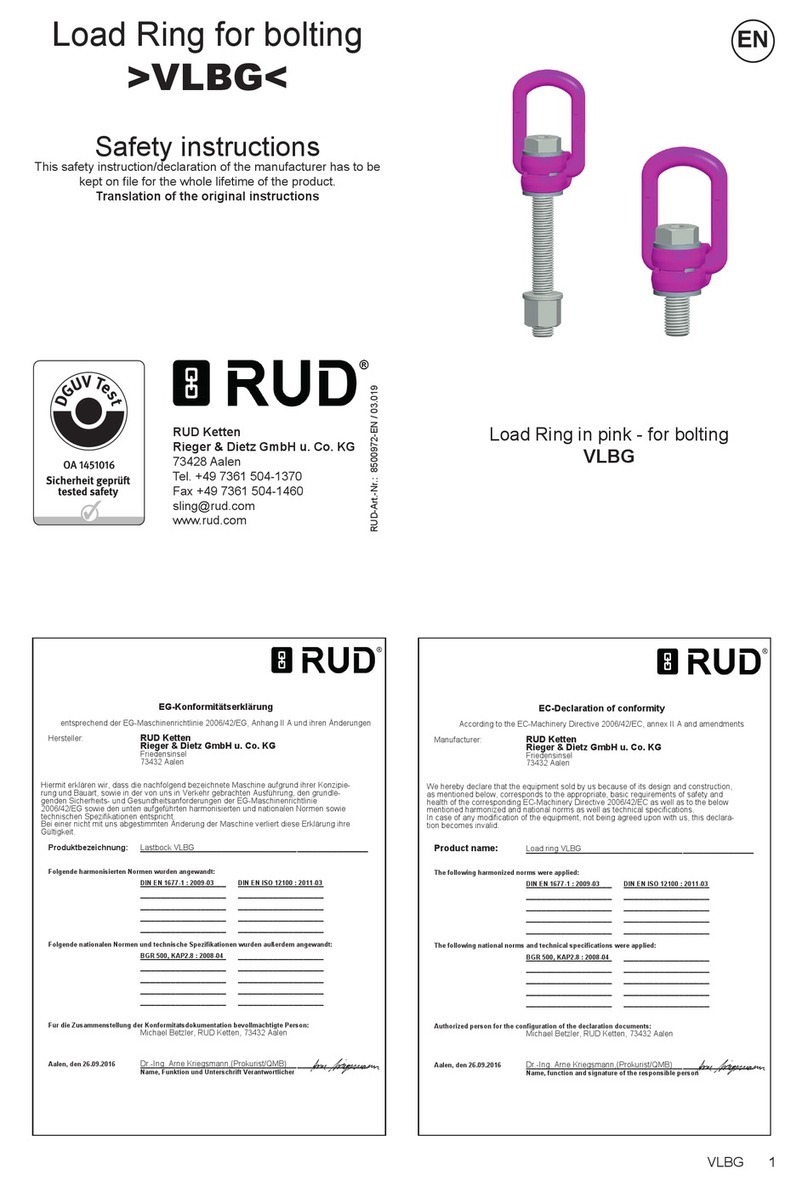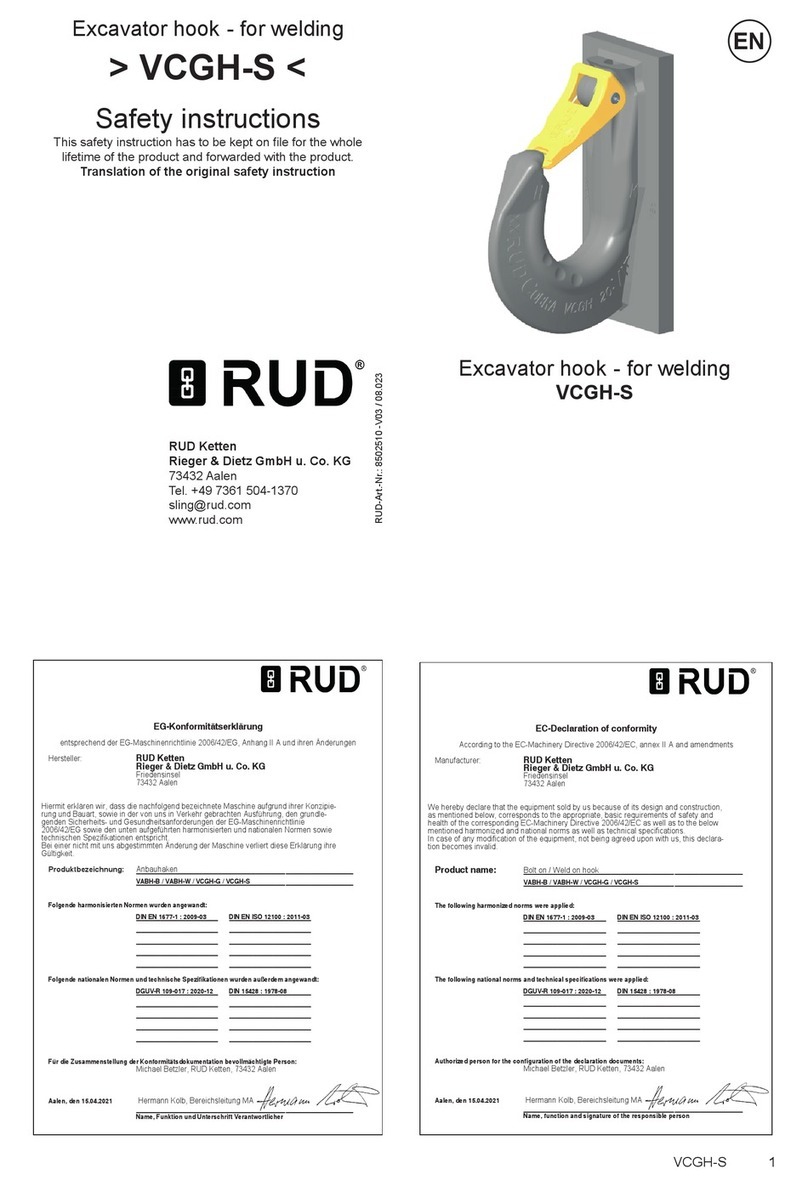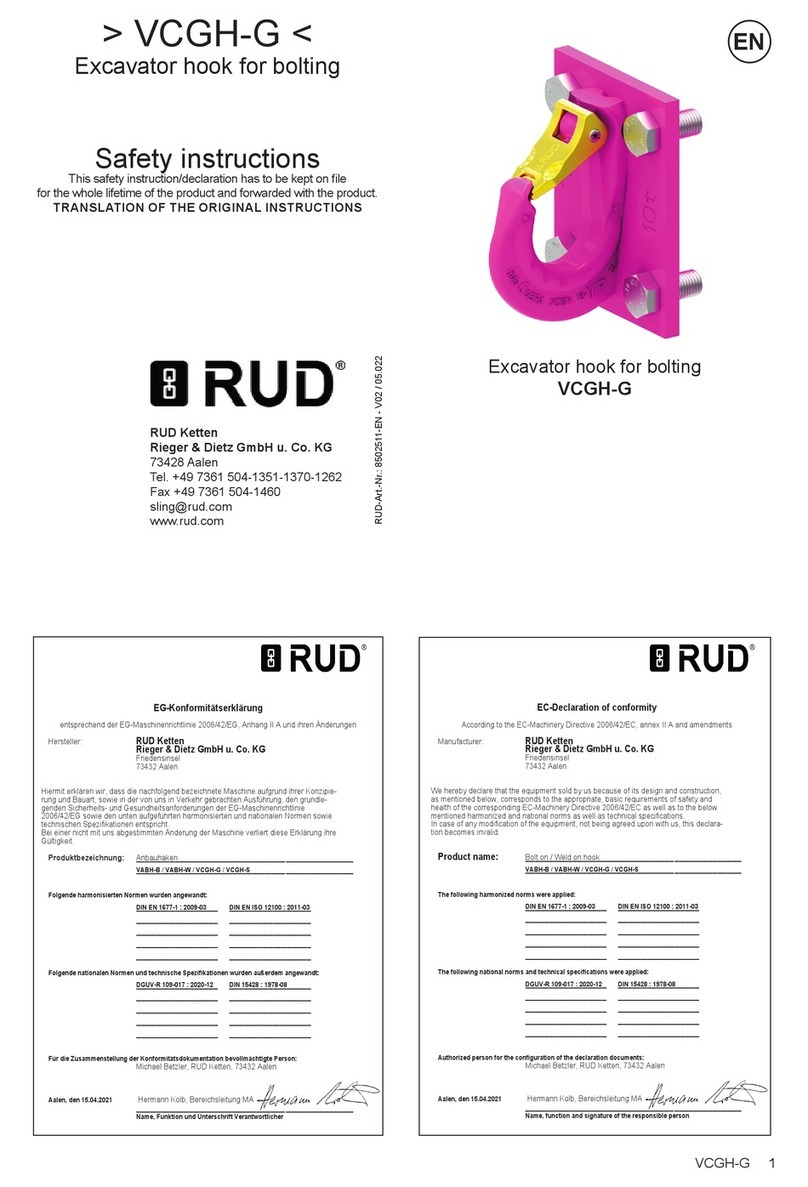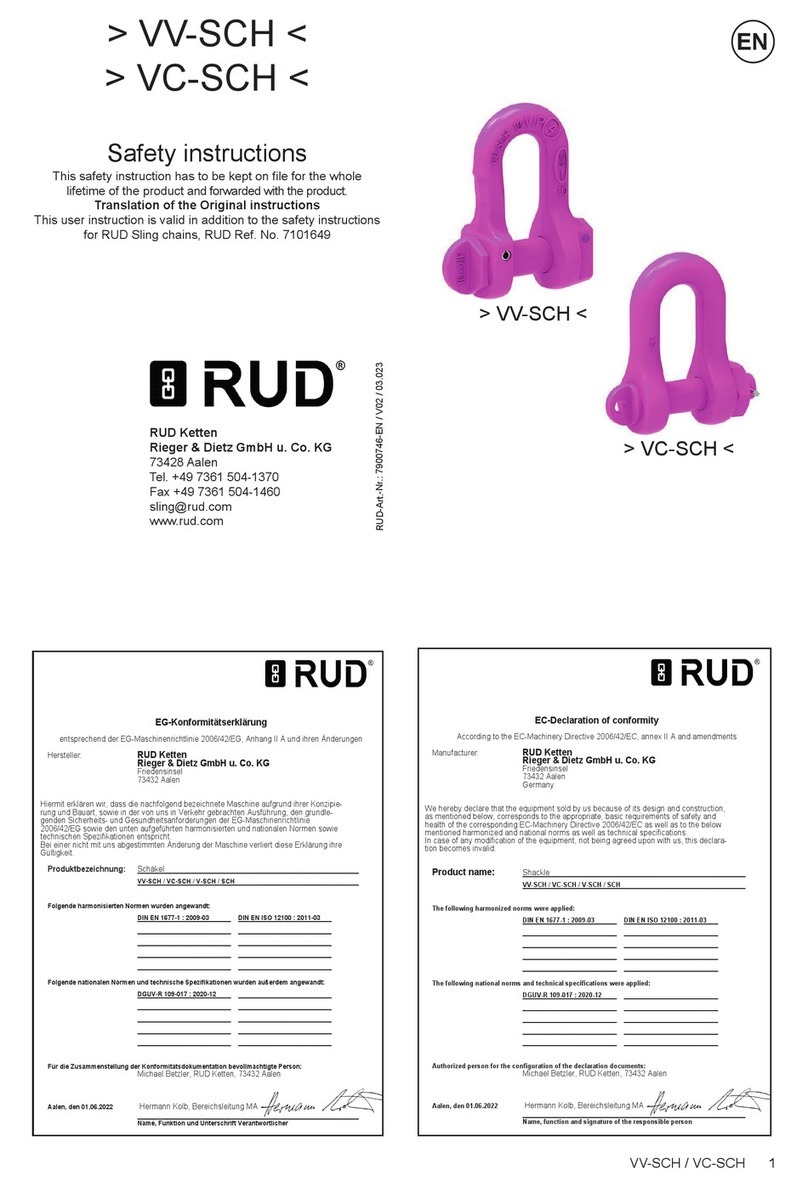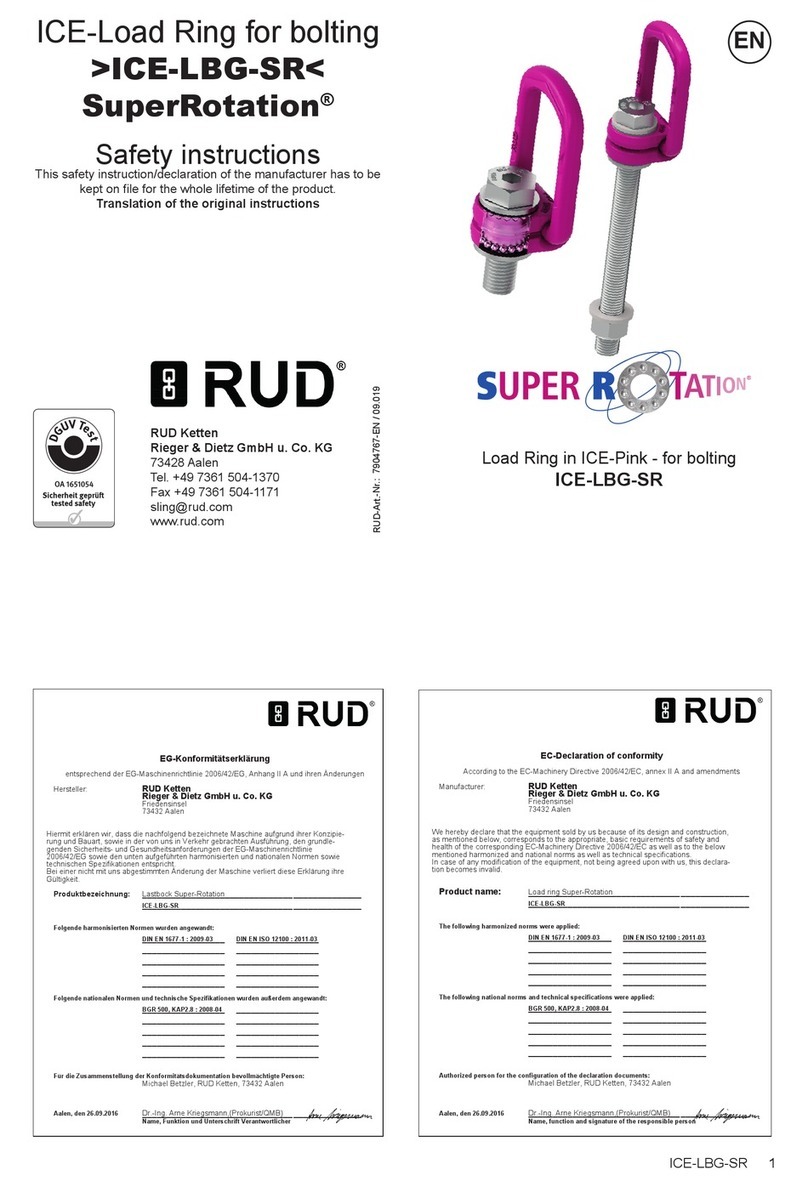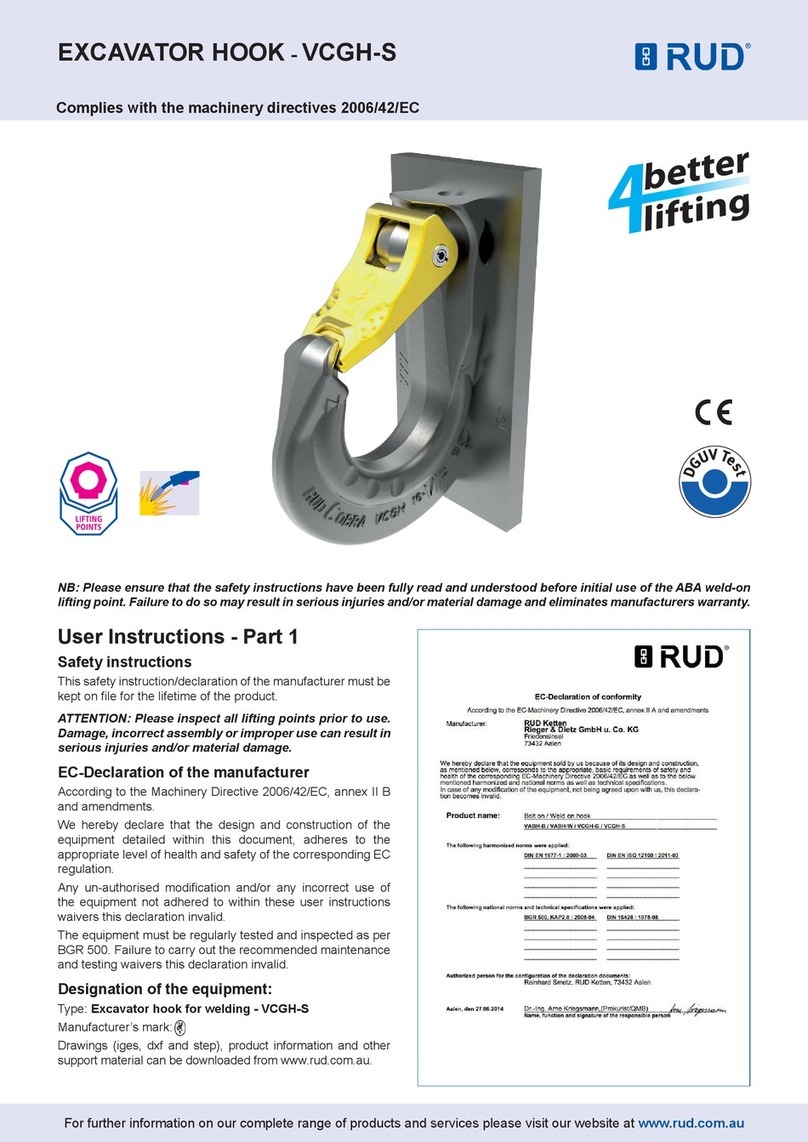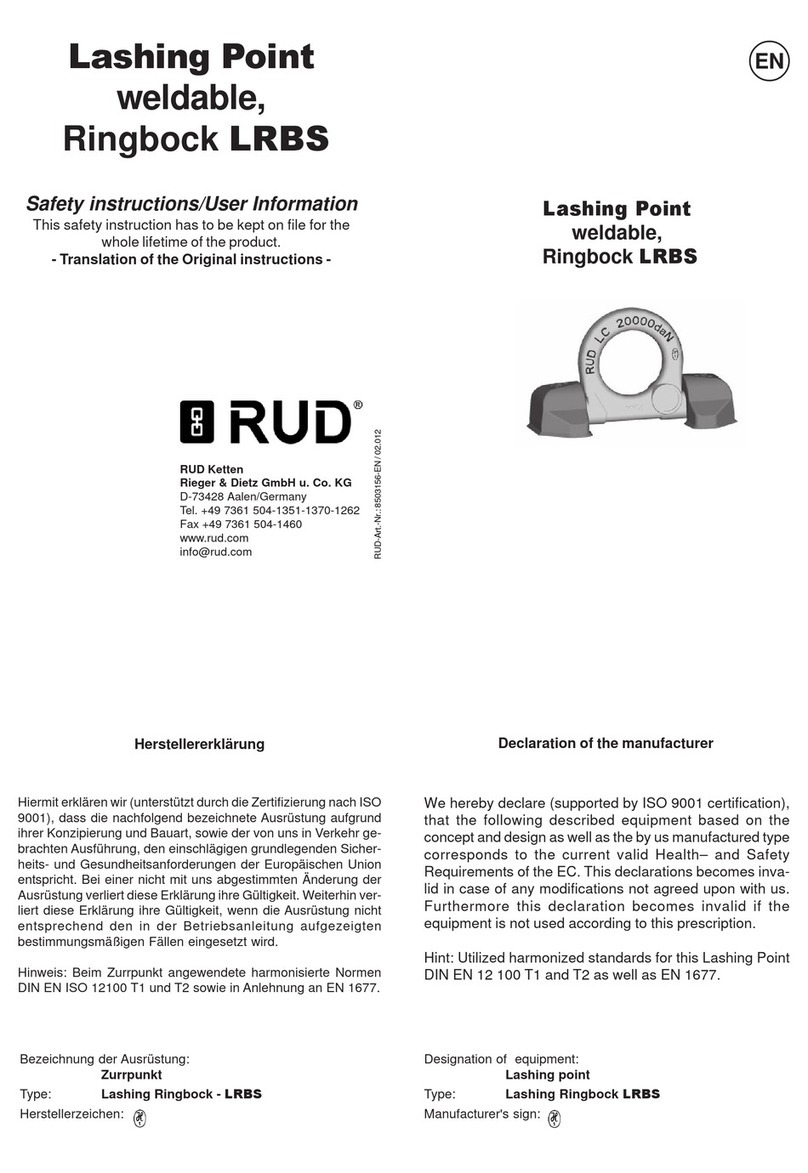
4VWBM
• For through hole screw connections, make sure that
the contact surface of the screw head is sucient
for the load. Complete the through hole xture for
the threat in the load according to DIN EN 20273
middle or ne.
• Due to the ball bearing and the bush bearing it is
sucient for a single lift to tighten the VWBM until
the bearing surface has support by using a spanner
acc. to DIN 895 resp. DIN 894, without using an
extension.
However, the torque moment according to Table 2
(+/- 10 %) must not be exceeded. We generally re-
commend assembly with a suitable torque wrench.
If the VWBMV shall permanently installed at the
load, tensioning must be carried out with a torque
(+/- 10 %) according to Table 2.
ATTENTION
Disassembly of the ball bearing resp. the
bush bearing disc carried out by the user
is forbidden.
• The VWBM must not be loaded with the Manufacturing
Proof Force MPF (2.5 x WLL). Should at the production
of lifting means or similar products, a singular proof
loading be necessary, please ask RUD in advance.
• Check nally the correct assembly (see chapter 4
Inspection / Repair / Disposal).
3.3 User instructions
3.3.1 General information regarding use
• Before use (e.g. by the user), inspect the entire lif-
ting point (secure thread t strong corrosion, cracks
in supporting parts, deformations). See section 4
Inspection / Repair / Disposal.
ATTENTION
Wrong assembled or damaged lifting
means as well as improper use can lead to
injuries of persons and damage of objects
when load falls.
Please inspect all lifting points before each
use.
• RUD components are designed according to DIN
EN 818 and DIN EN 1677 for a dynamic load of
20,000 load cycles.
• Keep in mind that several load cycles can occur
with a lifting procedure.
• Keep in mind that, due to the high dynamic stress
with high numbers of load cycles, that there is a
danger that the product will be damaged.
• The BG/DGUV recommends: For higher dy-
namic loading with a high number of load cycles
(continuous operation), the working load stress
must be reduced according to the driving mecha-
nism group 1Bm (M3 in accordance with DIN EN
818-7). Use a lifting point with a higher working
load limit.
• The VWBM are suitable for turning and rotating
loads.
• During rotation and turning, all positions of the
suspension link can occur.
• The nominal load capacity is indicated on the com-
ponent. The nominal load capacity corresponds to
the most unfavorable possible application ,resp.
worst case scenario (see Pic. 9 – Part X).
• When turning under 90° to the bolt-in axis (Pic. 9
Part X part Y) the load capacity per VWBM is limited
to the nominal load capacity (WLL).
• With the suspension ring manually aligned (see Pic.
9- Part Y) the higher () values from Table 3 can be
applied if no rotation or turning is performed.
ATTENTION
Pay attention during the usage that the load
type will not be change.
If the VWBM will be loaded only perpendicular (in
axial direction of the thread, see Pic. 9 - Part Z), the
corresponding WLL values from Table 3 (inclination
angle 0°) can be used.
• The ring of the manually adjusted VWBM can be
pivoted by approx. 230° (Pic. 3).
ATTENTION
The suspension ring resp. the attached
lifting mean must rotate and pivot without
interference during lifting and must neither
have support at the load edge nor at the
bottom part of the VWBM (Pic. 4).
Pic. 3: Pivoting area Pic. 4: Forbidden
contact or support at/or
with edge
• Only use appropriate lifting means for hinging in the
VWBM. The suspension ring must not be exposed
to bending load
• When lifting means (sling chains) are hinged or un-
hinged, no pinching, shearing or joint spots must occur
during the handling. Avoid damage of lifting means
resulting from sharp edges .
• Leave direct danger zone as far as possible.
• Watch always your hinged loads.
